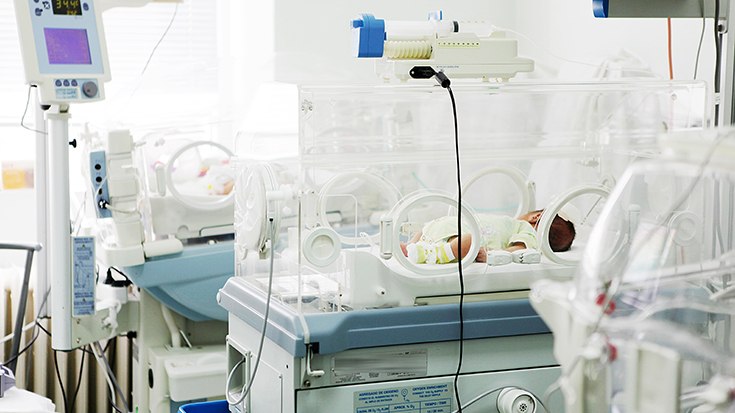
People with chronic respiratory diseases need ongoing care and education to manage their conditions at home. But those who live in rural areas of the country are often forced to go it alone because the services they need are not easily accessed from their outlying locations.
Respiratory therapists who work in the rural setting know the challenges these patients face and they are working hard to overcome them.
Better Breathers Club
When Laura Norris, RRT, relocated from a large suburb of Detroit, MI, two years ago to take on a job as manager of the ventilator dependent care unit (VDCU) at Gladwin Pines Nursing and Rehabilitation Center in tiny Gladwin, MI (population 2500), she discovered her new community needed more than just her skills in ventilator care.
“When doing research to market our VDCU, I noticed there was a problem with their general COPD population,” she said. “It is one of the highest in the United States.”
She decided to become a facilitator for an American Lung Association Better Breathers Club and hold monthly meetings for anyone in the area who wanted to attend.
“They come to our facility, and Gladwin Pines is gracious enough to market the club for me with monthly press releases,” Norris said. “I also reached out to MidMichigan Midland Hospital, whose own Breathers Club was failing to gain members, and they have recently joined their members with ours.”
The Better Breathers Club is providing chronic lung patients in this small community with the education they need to better manage their disease and it’s also creating a sense of community among people in the area who are all struggling with similar disease-related issues.
Our neighbors to the north
Up in Canada, where wide open spaces and rural communities abound, Michael MacAulay, RRT, and his colleagues are setting up rooms in hospitals and community clinics to provide respiratory care and patient education to those suffering from lung conditions. Home visits are part of the mix as well.
As a respiratory services professional practice lead at Interior Health, which is charged with delivering programs and services to residents across British Columbia’s Southern Interior, he says the biggest challenges he faces center around finding the right respiratory personnel to staff the services.
“Community work is different from what most RTs are trained in, so recruiting, retaining, and training can be an issue,” MacAuley said.
Education is imperative
Marlyce Campbell, CRT, is director of respiratory care at 25-bed Trego County Lemke Memorial Hospital in Wakeeney, KS, and has worked in rural areas of the state for most of her career. She believes it is imperative to educate respiratory patients about their conditions and she takes her care and education into the home setting as well.
“I work very closely with the DME companies and home health,” she said.
In addition to making sure her chronic lung patients have a six-month neb cup and a nebulizer that puts out 30 PSI or more, she has the oxygen companies check their concentrators if she feels they aren’t working properly or believes they have an oxygen conserving device (OCD) that isn’t meeting their needs.
Campbell reviews the medications her patients are on with them too, ensuring they know how to use them to their best advantage.
“I always have my patients bring in their meds, so that way I really know what they are taking, and they have to show and tell me what is taken when,” she said.
Problems she runs into range from patients thinking instructions to take their meds 12 hours apart means morning and afternoon are just fine, to not refrigerating medications that clearly call for refrigeration.
Campbell says she regularly uses the AARC’s Guide to Aerosol Delivery Devices for Respiratory Therapists in her efforts to educate her patients about their meds.
She also works with those who are having a hard time affording their medications to come up with a solution, and she performs overnight pulse oximetry to make sure patients are receiving enough oxygen from their OCDs.
“We have to remember that when a patient is dismissed, they may not be to their true baseline,” Campbell said. “So, after a month we can sometimes decrease the liter flow or have fewer treatments.
Patients in her rural community greatly appreciate her efforts.
“Weekly I am told by a patient that they have gotten more information and understanding of things in a 15-minute chat with me than they have ever had,” she said. “It makes my day knowing that I have given the patient the best care I know how.”
Going into the home
A respiratory therapist with Lourdes at Home, a home care service associated with Our Lady of Lourdes Memorial Hospital, Judy Kochmanski, BSRC, RRT, regularly visits patients in rural counties in and around Binghamton, NY.
“Nurses or PT or OT make the referral, then I go out to see, assess, and evaluate them,” she said.
One of the main issues these patients have is lack of access to physicians, and she acts as a physician extender in many of the cases, delivering care as well as patient education.
“I share their issues with the primary or pulmonary provider and have the respect of their providers so I can do a lot of adapting their meds to meet their challenges,” Kochmanski said.
Volunteering to help
Steve Cothalis, RRT, has been retired from RT for a while now, but he keeps his hand in the profession by volunteering to help a local pulmonologist in his Vermont community with a couple of the practice’s more difficult lung disease patients.
The long-time volunteer for the American Lung Association — you can read more about him on the organization’s Meet Our Volunteers page — provides the services mainly via the telephone.
“One patient, Jane, is a former pulmonary rehabilitation patient of mine,” Cothalis said. “She has IPF.” He phones her four days a week and recently helped her get in shape for a cruise she received from her children.
“Jane says, ‘I have pulmonary disease, I really don’t want to work out. But I know you’ll call at night — I have to do it,’” Cothalis said.
His other patient, Nick, suffers from COPD. “I taught Nick how to breathe efficiently for his COPD when I saw him in November,” he said. “We came up with a simple exercise program that he does every day.”
Regular Monday-Friday phone calls make sure he stays on track.
“I encourage him by reminding him that consistency is the key to improving your mental and physical health,” Cothalis said.
Cothalis keeps in constant touch with Jane and Nick’s physicians to let them know how things are going. If he feels they need to be seen by the doctor in the office, he makes sure they make an appointment.
“For example, over the phone, I could tell that Nick was having trouble,” he said. “Even though he was on an ICS I asked Nick to make an appointment.”
Cothalis suggested Nick ask the physician for a different ICS and he also advised him to get a spacer for his MDI.
“These small suggestions have made a tremendous improvement in Nick’s pulmonary health,” he said.
Worth the effort
Reaching rural patients isn’t always easy, but as these therapists show, it is well worth the effort. With support from a caring RT, people who don’t have ready access to state-of-the-art medical centers can still receive state-of-the-art care.
Email newsroom@aarc.org with questions or comments, we’d love to hear from you.














